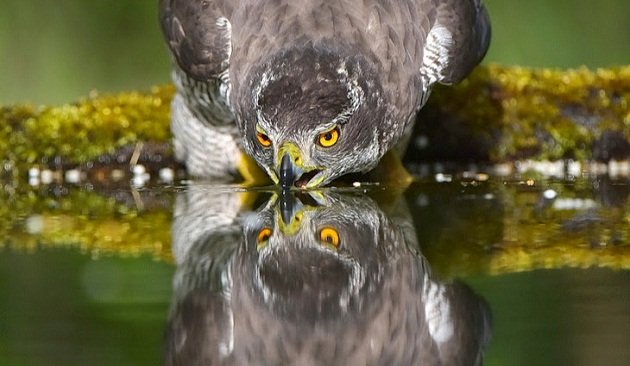
What do you think makes for a good bird hide? I have asked myself that same question many times over the last six months, until last week, when I was involved in an opening ceremony of five new bird hides at the Palic Lake, by the town of Subotica in the very north of Serbia, along the border with Hungary (all photos are from that area). As one of the consultants, I was part of the project from the beginning, so this was an icing on the cake – let’s see the final results.
Comfort?
There is one other nature reserve further south, the Obedska bara wetland, managed by the state forestry company. Some time ago, they applied for the tax payers funds and got them under a condition to build a series of bird towers and observation platforms. But the foresters were not interested in ecotourism; all they care about is to exploit more timber. When such a company runs a nature reserve, it is a bit like having a fox to watch over your chickens.
Later, I complained about some oversights in those hides. For example, the platform overlooking the heronry – initially, there were no benches (nor in any other of their hides), so I commented to the provincial Secretary for the environment (he is a birder and I know him personally) and he forwarded those suggestions to the reserve management. I don’t think they were happy, but they were forced to take them… well, half-seriously.
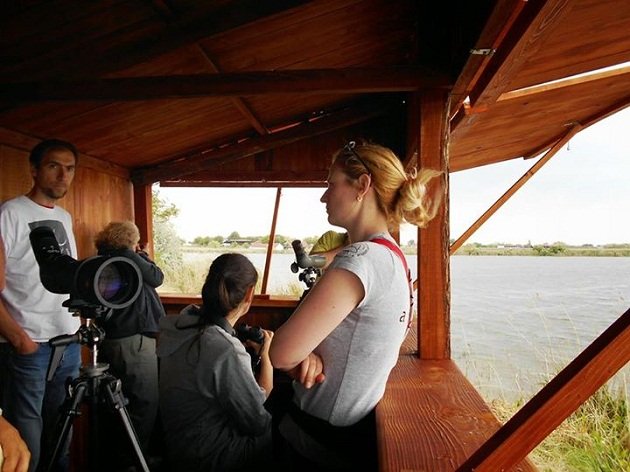 The new Palic 1 or Vecernjakov Salas hide.
The new Palic 1 or Vecernjakov Salas hide.
Next time I visited the Obedska bara, I found wooden benches at the platform. And a table, too. More or less, a proper picnic site. Both benches were turned towards the table, hence one had its back towards the reserve! And, of course, there was a group of youngsters barbecuing. They got the message right.
And so did I. After that experience, I stopped complaining about their hides, realising that they are as good as they ever will be. Anyway, the only one from which you can actually see some birds is that platform by the heronry and it remains the only one I still visit. Since the bench is turned the opposite way, I have to sit on the table. But no, I am not complaining. I know better now. Keep on with good work, Vojvodinasume.
Clearly, some furniture is required and, in the case of the Palic Lake, I insisted on large and wide wooden benches. Fortunately, Subotica lakes and steppes have their own management authority which is not interested in exploiting the reserves they are trusted with, so two-way communication is possible. And successful, too.
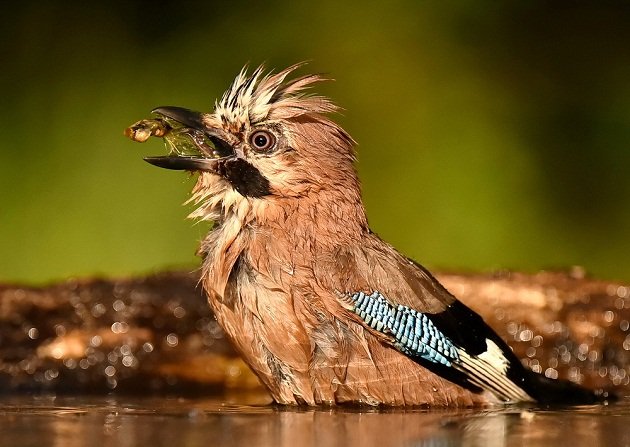 This Eurasian Jay, as well as the Northern Goshawk (cover photo) were photographed from the Subotica Sands hide by Gergely Jozsef.
This Eurasian Jay, as well as the Northern Goshawk (cover photo) were photographed from the Subotica Sands hide by Gergely Jozsef.
Location. Location. Location.
A good hide is pretty much like any other good real estate and its value is determined by the three most important factors: location, location and location. Only, this time it has nothing to do with the part of the town but with the neigbours, the feathery ones.
And that is why the hides are where they are, not to admire the scenery (or shoot at it – hunting is prohibited in the reserve and the ban is enforced). For example, the White-headed Duck is nowadays a rarity in Europe (okay, excluding Spain, I know… that Spain…), but until some 50 years ago, it used to breed in Serbia. In the last quarter of a century, it was recorded four times, two times in the last decade alone – both times here, at the Palic Lake and right in front of the new Palic 1 or Vecernjakov Salas hide (where one may leave the car and walk along the 3.6 km long bird path leading to the Palic 2 hide – ignore the confusing arrows pointing left, the path goes over the dyke at the right hand side).
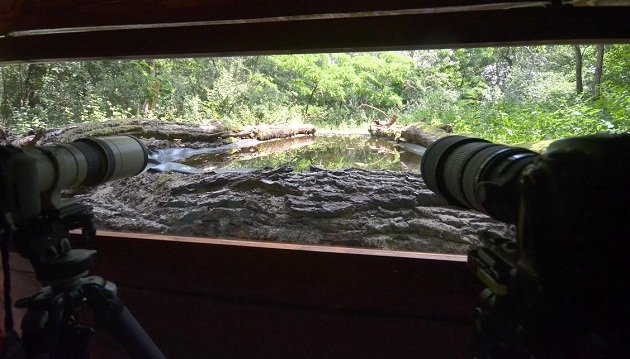 View from the Subotica Sands photographic hide.
View from the Subotica Sands photographic hide.
Beside the elusive White-headed Duck, this part of the lake gets really overcrowded with wintering waterbirds, up to 8000 of them, when everything becomes possible. The best birds we saw during the opening were two Black-winged Stilts in low flight, but I was more focused on checking those dark-headed gulls around, looking for very particular dark-headed gulls.
The next, Palic 2 hide, overlooks two artificial islands with breeding colonies of Pygmy and Great Cormorants and, and at the other, of Mediterranean and Black-headed Gulls. This is the only place in the country where the rarer Mediterranean Gull breeds, yet, just a few pairs and despite all the scanning, I was unable to locate them in the colony. Nor was the reserve ranger accompanying us, but on this occasion he was more focused on the visitors, especially those from the local tourism organisation, than the birds.
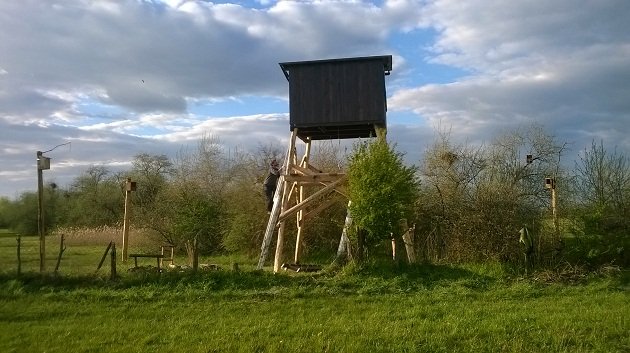 The hide overlooking the breeding colony of Red-footed Falcons.
The hide overlooking the breeding colony of Red-footed Falcons.
From there, we went to the Subotica Sands reserve (Suboticka pescara in Serbian), a sandy soil chess-board of grassland interspersed with forest groves. This hide, as well as the similar one in the nearby Selevenj Puszta (Selevenjske pustare), is intended for photographers and is half dug in, so the windows made out of non-reflective glass are at the ground level, overlooking the deliberately made artificial watering hole. Some ten species of birds were visiting the waterhole hourly (including Northern Goshawk and the Eurasian Sparrowhawk), and later in the season, when the temperatures soar and water becomes scarce, that number is sure to increase. Not far from here, the last of the photographic hides with non-reflexive glass was erected six metres above the ground on a private farm, overlooking the breeding colony of Red-footed Falcons. I am not a photographer, but was really tempted to explore the possibilities of these hides.
In summary, the purposefully built hides at the Palic Lake and other reserves around the candybox, Art Nouveau town of Subotica will enhance the experience of birders and photographers visiting the area and if you are in the neighbourhood in the next two weeks, until the official end of the project, guided tours are provided free of charge (write to birdwatching.rs@gmail.com or check the maps at birdwatching.rs, so far, only in Serbian).

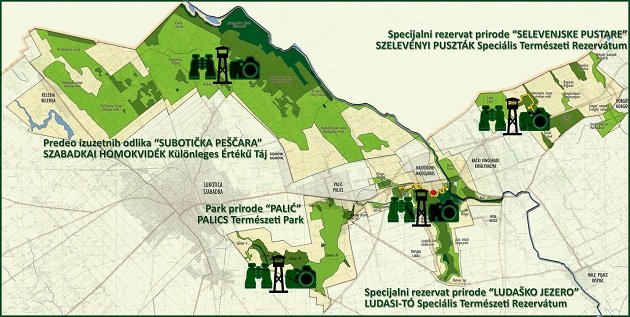










Leave a Comment